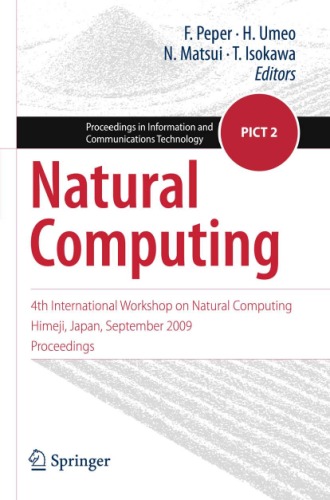

Most ebook files are in PDF format, so you can easily read them using various software such as Foxit Reader or directly on the Google Chrome browser.
Some ebook files are released by publishers in other formats such as .awz, .mobi, .epub, .fb2, etc. You may need to install specific software to read these formats on mobile/PC, such as Calibre.
Please read the tutorial at this link: https://ebookbell.com/faq
We offer FREE conversion to the popular formats you request; however, this may take some time. Therefore, right after payment, please email us, and we will try to provide the service as quickly as possible.
For some exceptional file formats or broken links (if any), please refrain from opening any disputes. Instead, email us first, and we will try to assist within a maximum of 6 hours.
EbookBell Team

4.8
74 reviews
ISBN 10: 4431538682
ISBN 13: 9784431538684
Author: Ferdinand Peper; Hiroshi Umeo; Nobuyuki Matsui
The complex behavior of systems in nature is rooted in intricate mechanisms of interaction that often supersede human-made systems in terms of reliability, power efficiency, and computational capacity. Researchers have begun to realize that natural systems are a great source of inspiration for novel algorithms in computation and communication systems. The International Workshop on Natural Computing (IWNC) is a platform that brings together computer scientists, biologists, mathematicians, electronic engineers, physicists, and social scientists to critically assess present findings in the field and to outline future developments in novel and emerging paradigms of computation and computing architectures. This compilation contains the papers from the most recent workshop, held in Himeji, Japan. Presented by scientists of worldwide reputation, the topics include DNA computation, cellular automata, physics and computation, evolutionary computing, neural networks, amoeba-based computing, artificial chemistry, noise-driven computing, chaotic systems, and unconventional models of communication.
international computing olympiad
natural computation
4th international conference on natural resources and technology
international computing center
b4 natural sciences